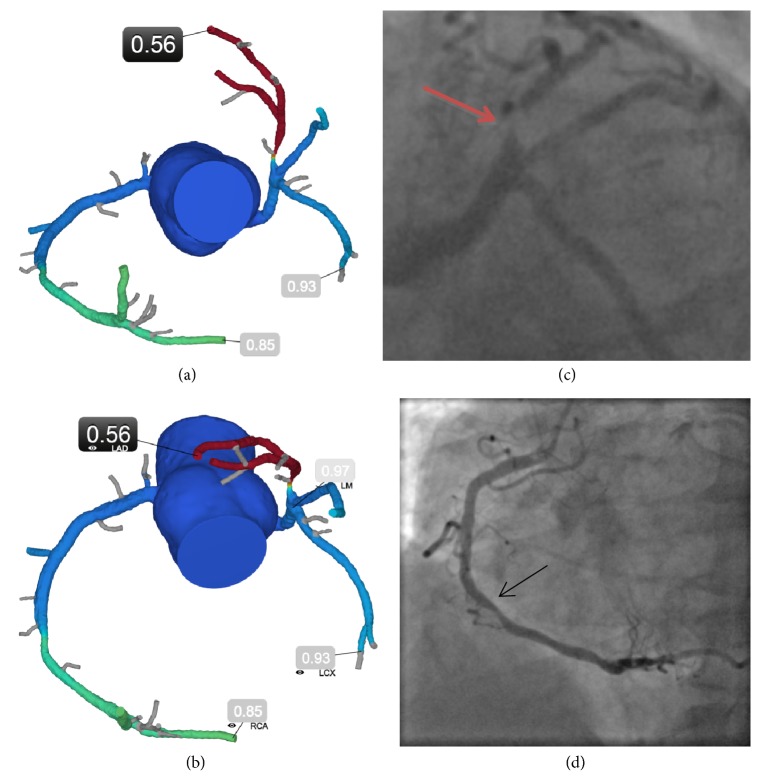Figure 1.
FFRCT redefining revascularization strategy. A 68-year-old male with tobacco abuse, hypertension, hyperlipidemia, diabetes, and shortness of breath underwent coronary CTA demonstrating a 70%-90% stenosis of the proximal LAD and a 50%-70% stenosis of the mid-RCA. The initial decision based on the coronary anatomy alone was to refer the patient for coronary artery bypass graft surgery. However, FFRCT was performed to help inform the invasive procedure. FFRCT distal to the proximal LAD and mid-RCA stenoses were 0.56 and 0.85, respectively. The patient was rescheduled for PCI, received one stent in the proximal LAD, and is asymptomatic at three-year follow-up. Teaching points: with the functionally significant stenosis in the proximal LAD supplying a large territory of myocardium and his continued symptoms on optimal medical therapy, the patient was taken to the catheterization laboratory where a drug-eluting stent was placed. In addition, the cardiologist performed invasive FFR for the moderate stenosis in the RCA which was 0.86, corroborating the nonfunctionally significant lesion and no intervention was performed. This case highlights the unique opportunity to noninvasively provide physiological information on a per-lesion level. This enables a more informed decision around recommendations for ICA, specifically about which vessels to further interrogate and may redefine revascularization strategy. Even when the decision on referral to ICA is already taken because of symptoms and high-risk anatomy as determined by coronary CTA, FFRCT may be of relevance by guiding decisions about other intermediate range lesions. FFRCT (a,b) and ICA (c,d). LAD demonstrates a focal proximal severe stenosis (red arrow) that is hemodynamically significant. RCA demonstrates a focal mid moderate stenosis (black arrow) that is not hemodynamically significant. FFRCT indicates fractional flow reserve derived from coronary computed tomography angiography (CTA) datasets; ICA, invasive coronary angiography; LAD, left anterior descending artery; and RCA, right coronary artery.

